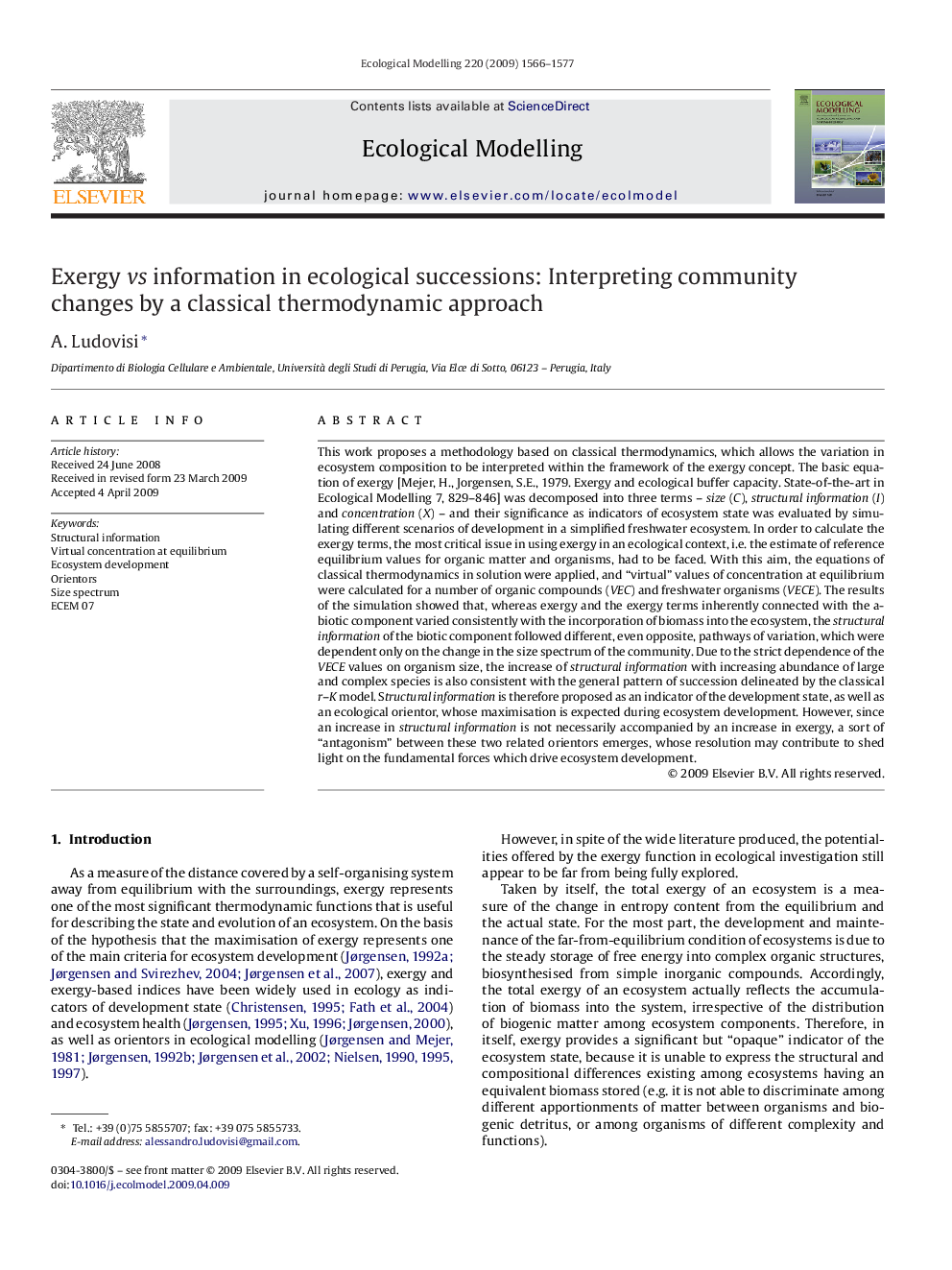| کد مقاله | کد نشریه | سال انتشار | مقاله انگلیسی | نسخه تمام متن |
|---|---|---|---|---|
| 4377736 | 1617523 | 2009 | 12 صفحه PDF | دانلود رایگان |

This work proposes a methodology based on classical thermodynamics, which allows the variation in ecosystem composition to be interpreted within the framework of the exergy concept. The basic equation of exergy [Mejer, H., Jorgensen, S.E., 1979. Exergy and ecological buffer capacity. State-of-the-art in Ecological Modelling 7, 829–846] was decomposed into three terms – size (C), structural information (I) and concentration (X) – and their significance as indicators of ecosystem state was evaluated by simulating different scenarios of development in a simplified freshwater ecosystem. In order to calculate the exergy terms, the most critical issue in using exergy in an ecological context, i.e. the estimate of reference equilibrium values for organic matter and organisms, had to be faced. With this aim, the equations of classical thermodynamics in solution were applied, and “virtual” values of concentration at equilibrium were calculated for a number of organic compounds (VEC) and freshwater organisms (VECE). The results of the simulation showed that, whereas exergy and the exergy terms inherently connected with the a-biotic component varied consistently with the incorporation of biomass into the ecosystem, the structural information of the biotic component followed different, even opposite, pathways of variation, which were dependent only on the change in the size spectrum of the community. Due to the strict dependence of the VECE values on organism size, the increase of structural information with increasing abundance of large and complex species is also consistent with the general pattern of succession delineated by the classical r–K model. Structural information is therefore proposed as an indicator of the development state, as well as an ecological orientor, whose maximisation is expected during ecosystem development. However, since an increase in structural information is not necessarily accompanied by an increase in exergy, a sort of “antagonism” between these two related orientors emerges, whose resolution may contribute to shed light on the fundamental forces which drive ecosystem development.
Journal: Ecological Modelling - Volume 220, Issues 13–14, 17 July 2009, Pages 1566–1577